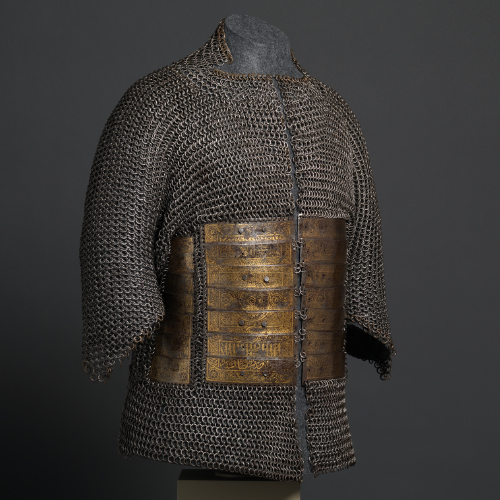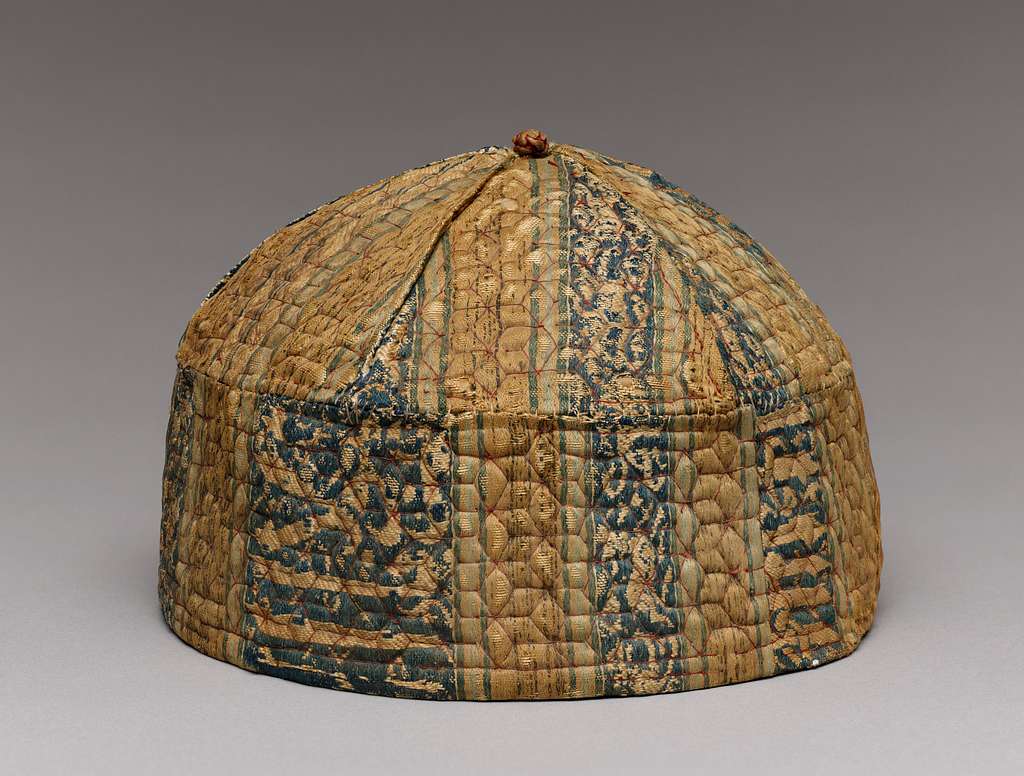Continuing our exploration of sartorial evolution throughout the Umayyad, Abbasid, and Fatimid Dynasties, we now embark on a journey into the realm of the Mamlūk Sultanate (1250-1517). The preceding eras ushered in a mosaic of cultural influences and societal norms, which moulded Islamic attire and underscored its significance as a symbol of power, status, and identity. The Mamluks were not only ardent patrons of the arts and architecture but also connoisseurs of a diverse and sophisticated range of garments. This article is guided by Yedida Kalfon Stillman’s “Arab Dress: From the Dawn of Islam to Modern Times” and is augmented by images and illustrations from various sources. We shall delve into the exquisite world of Mamluk attire, exploring the diverse fabrics and styles, the significance of headgear, the integral role of clothing in court culture, and the unique features and cultural influences that shaped the clothing of this era. Mingling Cultures: The Geographical and Cultural Landscape of Mamluk Sultanate
Originally slave soldiers who ascended to power and established a ruling elite, the Mamluks ruled over Egypt, the Levant, and Hejaz from the mid-thirteenth to the early sixteenth century, yet their influence extended beyond their borders. The geographical diversity within the Mamluk Sultanate and the fusion of various cultures facilitated the blending of different styles, materials and techniques. The Mamluk period was a rich Tapestry
Tapestry: wall hanging or other large piece of fabric that is woven in coloured weft
Weft: one of the two basic components used in weaving that transforms thread or yarns into a piece of fabric. It is the crosswise thread on a loom that is passed over and under the warp threads. threads or embroidered with a decorative design. Typically made of wool, but they can also be made of other materials such as silk, linen, or cotton. Often used to decorate homes, churches, and other buildings. of cultural influences, including those of the Turks, Mongols, and Persians, each contributing distinct elements to the overall aesthetic of Mamluk attire. Luxurious fabrics such as Brocade
Brocade: (Italian: brocco – twisted thread), is a richly decorative fabric woven with an intricate raised pattern. Its origins can be traced back to ancient China, where it was made for the imperial court. It later spread to Europe during the Renaissance and became popular in couture and decorative arts. and silk were highly prized, reflecting the extensive global trade networks of the era. This profound intercultural exchange is exemplified by a 2017 study identifying
Chinese silk in surviving textile fragments from the Mamluk era.Materials and styles
Egypt played a pivotal role during the Mamluk period, particularly for its flax cultivation and exquisite linen textiles, a staple in international markets like Sicily and Tunisia (Ifrīqiyah), reflecting its flourishing flax cultivation. Materials from this period were often crafted from refined linen and other lightweight fabrics, essential for the prevailing regional climate. Precious fabrics like khuṣrawānī and the iridescent qalamūnī were highly sought after by people of means. Much like the preceding eras, luxurious and intricate fabrics were often adorned with silk, gold and silver embroidery or studded with jewels. However, the inclusion of embroidered written formulas and texts on clothing diminished. The fityān, young men known for their fashion sense and love for luxury, bore distinctive sartorial hallmarks. In Maqāmāt manuscripts, they were frequently depicted wearing unique styles of trousers or pantaloons (sirwāl). Notable iconographer Oleg Grabar suggests that some of these distinguished garments may have been represented in the attire of other cultural depictions, underscoring the broad cultural impact of their fashion. Role of Dress in Court Culture
In the Mamluk society, attire served not merely as a practical necessity but as a language that conveyed intricate social hierarchies. Initially, Central Asian styles, predominantly evident in military and ceremonial attire, set apart the military feudal elite, who sought to distinguish themselves from the native population. However, over time, additional styles gradually permeated the wardrobes of the ruling Mamluks. The government orchestrated the provision of ceremonial costumes, known as ‘badla mawkibiyya,’ for public occasions, enveloping government clerks, their families, and household retainers in an elaborate Tapestry
Tapestry: wall hanging or other large piece of fabric that is woven in coloured weft
Weft: one of the two basic components used in weaving that transforms thread or yarns into a piece of fabric. It is the crosswise thread on a loom that is passed over and under the warp threads. threads or embroidered with a decorative design. Typically made of wool, but they can also be made of other materials such as silk, linen, or cotton. Often used to decorate homes, churches, and other buildings. of social symbolism. Each ceremonial costume was meticulously crafted, from the turban to the undergarments, reflecting the socio-political significance embedded in attire. Mamluk chamfron MBA Lyon circa 1419
Headgear
During the Mamluk era, headgear served a dual purpose, functioning not only as a fashion statement but a symbol of one’s social status, role, and identity. High-ranking civil servants under the Mamluks were known to wear a specific turban called ‘baqyār.’ These turbans could be fashioned from embroidered linen made in Alexandria or Damietta, thus showcasing the wearer’s prestigious position within the societal hierarchy. Moreover, the diverse styles and the decorative elements of the headgear, often adorned with jewels and intricate embroidery, served as indicators of the vibrant cultural milieu of the Mamluk Sultanate. Documentation and sources
Today, very few clothing examples from the Mamluk period have survived. Archaeological findings from sites like Quseir al-Qadim offer rare insights into garment construction, fabric, and decoration, thanks to detailed studies by experts such as Gillian Eastwood.
In addition to tangible remnants, various insights are derived from literary and visual depictions, including illuminated manuscripts, stucco reliefs, and ceramic wares. These, along with European and local literary descriptions, vividly depict the stylistic and functional elements of Mamluk attire, revealing the cultural and societal nuances of the period.
Historical chronicles authored by Mamluk-era historians, travel memoirs, and administrative documents further enrich our understanding of Mamluk attire. They provide diverse perspectives and detailed narratives on societal structures, legal implications, and aesthetic preferences related to dress in Mamluk society. Poetry and prose from the era capture the aesthetic and symbolic elements of Mamluk fashion, while the Geniza collection provides nuanced details about garments from different periods in Egypt.
Modern scholarship broadens our comprehension by exploring various facets of Mamluk history, contextualising the sartorial expressions within the broader socio-cultural and political landscape of the Mamluk Sultanate.
Exploring the attire of the Mamluk Sultanate reveals rich cultural and societal narratives, with each garment serving as a symbol of power, status, and identity within this historically diverse civilization. This journey through their dress is an appreciation of aesthetic sophistication and provides insight into the layered stories of cultural intermingling and shared human values. It serves as a poignant reminder of the interconnectedness of past and present societies, inviting us to reflect on how the fusion of diverse cultures and the aesthetic richness of the past can inspire contemporary fashion designs and cultural dialogues.
In the next instalment of this series, we will delve into the dress of the Ottomans, who ruled from the Medieval period to modern times.






